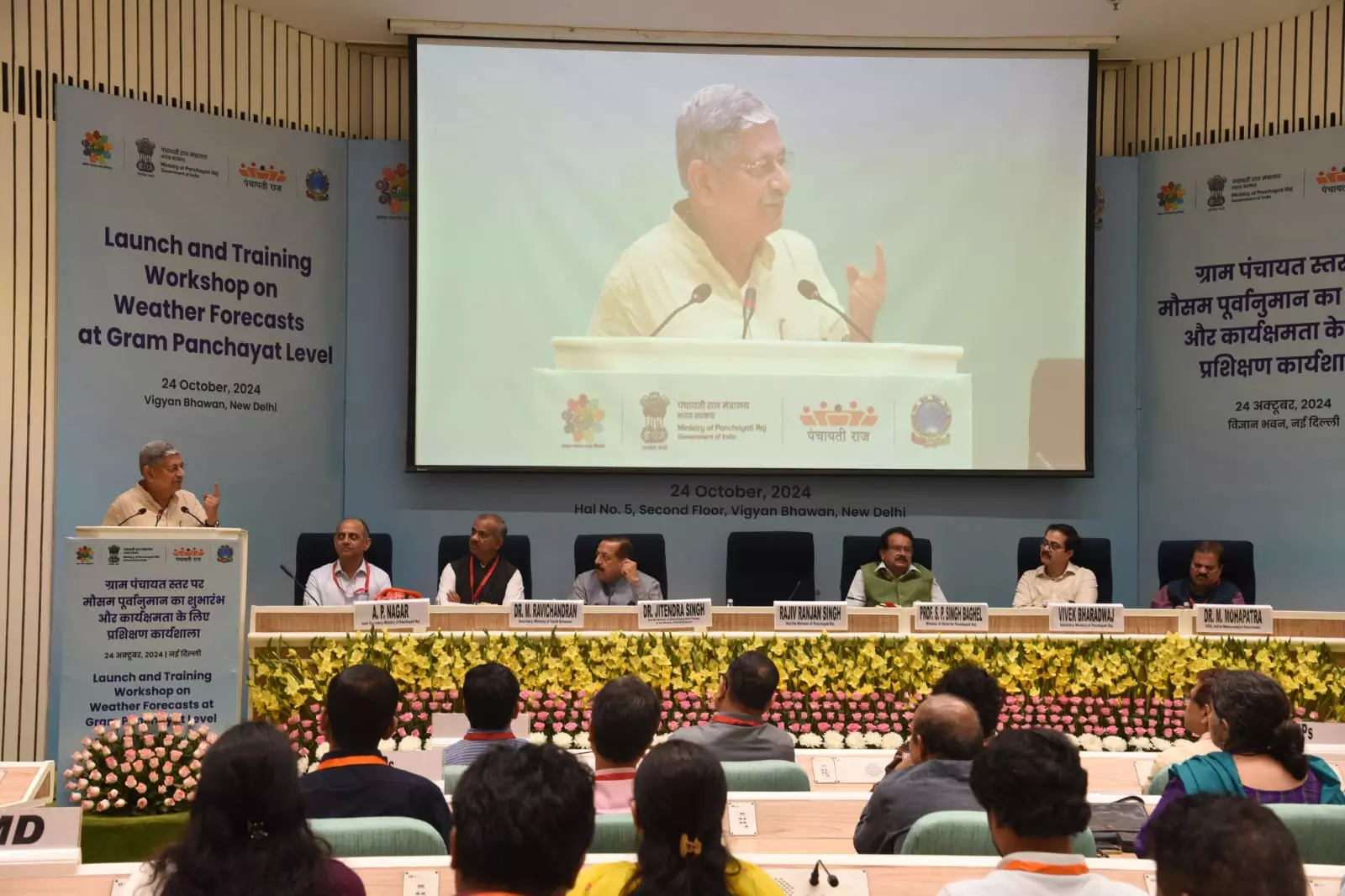Weather forecasting facility at Gram Panchayat level launched in Delhi

New Delhi: A weather forecasting facility at the Gram Panchayat level was launched by Rajiv Ranjan Singh alias Lalan Singh, Minister of Panchayati Raj at Vigyan Bhawan in New Delhi on Saturday.
The initiative, developed in collaboration between the Ministry of Panchayati Raj (MoPR) and the India Meteorological Department (IMD), Ministry of Earth Sciences (MoES), marks a major step forward in climate preparedness at the grassroots level.
This significant endeavour is part of the government’s 100 days agenda and reflects a whole of government approach, with the Ministry of Panchayati Raj working closely with expert departments to bring transformative changes in grassroots governance.
The initiative will provide Gram Panchayats with a five-day weather forecast and hourly updates, enabling rural communities to better plan agricultural activities and prepare for weather-related risks.
Rajiv Ranjan Singh emphasized that “Weather forecasting at the Gram Panchayat Level” is a key step towards empowering the Indian economy and enhancing the ease of living for rural populations.
This initiative will transform rural governance by enabling Panchayats to address climate challenges and improve decision-making for agriculture and disaster preparedness. He highlighted the crucial role of Panchayati Raj Institutions (PRIs) in disseminating timely weather information to rural citizens, ultimately improving livelihoods and fostering sustainable development.
He said that weather forecasts at the Gram Panchayat level will be a milestone in empowering rural areas and boosting the agriculture-based economy. The Union Minister hailed Prime Minister Narendra Modi’s “Ek Ped Maa Ke Naam” as a historic initiative that links environmental protection with emotional values, aimed at increasing green cover.
He praised the joint efforts of the Ministry of Panchayati Raj and IMD for this initiative, highlighting its potential to help farmers plan more effectively and reduce agricultural losses due to weather uncertainties.

